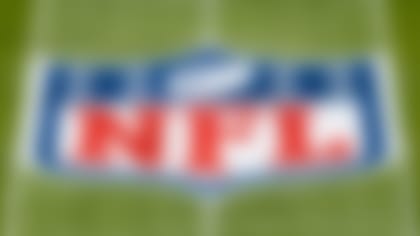An exhaustive data collection and analysis process drives insights that underpin all of the NFL's health and safety work. That process is much more extensive than simply counting injuries.
The league's unprecedented data collection includes information that all 32 clubs enter into a centralized injury data base, the Electronic Medical Record, or EMR, combined with data sourced from dozens of camera angles and thousands of hours of game footage and gathered from innovative technology, including sensors in mouthguards, helmets, and shoulder pads.
Every NFL Play is Data
The NFL uses Radio Frequency Identification (RFID) tags, including those developed by Zebra Technologies, embedded within equipment to collect information on which piece of equipment – including the component parts of each, from a helmet's chin strap to its facemask – players are wearing. As soon as players step out of the locker room and onto the field, the tags are activated by radio waves that send data to a central digital inventory management system. This data is collected for every player, for every practice and every game.
"Zebra's RFID tags are attached to players' shoulder pads and in footballs to transmit real-time location data to gather metrics such as player speed, distance traveled, orientation and acceleration," said John Pollard, vice president of business development, Zebra Technologies. "The collaboration between the NFL and Zebra is driving insights that can help keep players safe."
Mouthguard sensors are also collecting head kinematic data—like how fast and in what direction a player's head moves within a helmet. They help the league to collect more information than ever before about the duration and direction of head impacts players experience based on their positions, both during practices and games.
All this sensor data is taken together with field surface information, weather-related variables, workload and performance data, and video review, including review of more than 1,000 concussion-causing impacts broken down into 150 variables and frame-by-frame review of all major injuries to collect information on pose, behavior, play type, speed, equipment, forces, and more.
The data is so precise that the NFL's engineers can analyze it position-by-position to develop insights into exactly what types of impacts players are most likely to experience and then work directly with helmet manufacturers to share these learnings so that they can design position-specific equipment to better protect against those impacts.

Better Helmets for Players
Thanks to improvements in helmet technology, more and better models are available to players than ever before—and the number continues to grow.
Helmets that ranked at the top of the NFL/NFLPA helmet laboratory testing performance results as recently as 2020 have since been bumped down the list by new and improved models. Last year, 99.9 percent of players wore a top-performing helmet. They now have an opportunity to sport an even better-performing helmet for the 2021 season.
And those players may soon be sporting position-specific helmets. A helmet designed for linebackers was tested in 2021, an encouraging marker that the industry is leveraging more and better data to design custom equipment that better suits the needs of each player.
The league is also wrapping up the Helmet Challenge, a multi-million dollar competition to spur the development of a helmet that achieves transformational, double-digit percentage improvement over any helmet currently worn by an NFL player. Competition results will be announced in fall 2021.

Measuring Success
The NFL's investment in helmet innovation is in service of a bigger goal – reducing the number of concussions players sustain on the field.
It takes a multi-faceted approach to drive measurable change. Better performing helmets are key, but the NFL’s Injury Reduction Plan also includes strategies to make preseason practices safer and change the rules of the game to avoid unnecessary risk to players.
These interventions are working. The number of concussions from 2018-2020 was 25% lower than in 2015-2017, a sustained reduction that sets a new benchmark for the future.
But the work is never done. The NFL will continue to lead by example – investing in the most promising new innovations in sports safety and using data to make informed decisions that improve player health.












